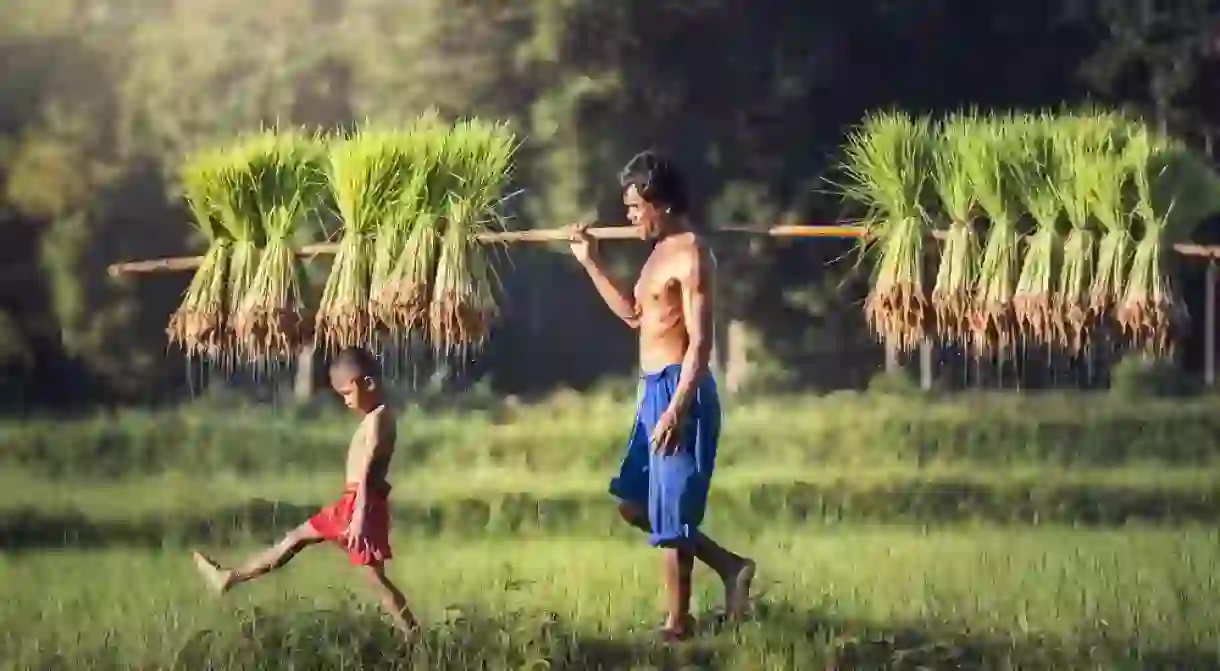A Guide to Homestays in Cambodia

Tourism trends come and go but one that looks set to stick about for a while – and with good reason – is experiential travel, and Cambodia is packed full of opportunities.
As the country’s more off-the-track destinations become more accessible, underprivileged communities are starting to tap into the trend by opening up their homes and businesses, to offer a glimpse into the real life of Cambodians. The result is a swathe of homestays mushrooming across the country. Here is the lowdown on what to expect, how they operate and what to pack.

Cambodia is at its finest in the heart of the country’s sprawling rural landscape. This is the real Cambodia, away from the tourist traps and hustle and bustle of urban life. And there is an abundance of it waiting to be explored, from the mountainous region of Mondulkiri – home to the country’s indigenous tribes – and the thick tropical jungle that claims the Cardamom Mountains, to the riverside province of Kratie, Banteay Srei in Siem Reap and all the provinces in between.
What is a homestay?
The clue lies in the title because this is exactly what it says it is: staying with a local family in their home. Today travellers are searching for meaningful experiences and Cambodia is the place to be with homestays offering visitors the chance to live like a Cambodian by fully immersing in local life.
This includes eating and sleeping with families, visiting the communities they live in and seeing how they work, as well as taking trips to local pagodas, schools, markets and other attractions.

Forming part of the eco-tourism movement, community-based tourism is alive and kicking in Cambodia in various forms. Using tourism as a tool to equip local – often impoverished – communities with a sustainable form of income, the model has seen a series of organisations take to some of the Kingdom’s poorest provinces to train locals with the hospitality and business skills needed to operate a network of homestays in the villages they call home.
Guests are often also treated to other local experiences, such as rides in local fishing boats, ox cart rides through paddies, cycles through the countryside and traditional dance and music shows by villagers.
What should I expect?
The offerings and experiences available span the spectrum so it’s worth doing your research. There is also the option to book the homestay separately or as part of a tour, taking in a range of activities in the area led by a knowledgeable local guide.
The quality of accommodation and amenities also vastly varies. For example, Visit Banteay Srei’s network of 13 homestays in the Siem Reap district range from basic traditional houses – wooden structures on stilts – to more upmarket villas equipped with modern amenities, such as western style bathrooms and kitchens.

The collective also offer several homes for private hire, or the option to stay with families. Many of the families can organise activities in the area, which include visiting dragon fruit farm Happy Dragon, a trip to nearby Phnom Kulen and watching artisans at work.
Cambodian Rural Discovery Tours specialises in offering unique rural experiences centred around the eastern province of Kratie. Its wide range of tours vary from seeing the endangered Irrawaddy dolphins that call a small stretch of the Mekong River home, jungle trekking and staying with locals in really remote locations.
Here, you can forget the luxuries that some of Banteay Srei’s private villas offer because this is real rural living. During their stay, visitors get to live as their hosts do, so don’t expect any fancy living because many of these communities are cut off – mobile reception is rare, the internet is probably a no-go depending on your network, and electricity at night is a bonus if your family owns a generator.

Your bed for the night is more than likely a thin mattress on a wooden floor, covered by a mosquito net. The toilet will be outside and probably a hole-in-the-floor style toilet with a bum gun, and the “shower” will be a large ceramic jar of water and a jug to pour it over yourself. And you won’t need an alarm because rural life starts before dawn, and the clattering of pots and pans and morning call of roosters will ensure you rise early.
It’s worth remembering many of these communities are isolated and this is Cambodia, so you can expect to find company in the form of a range of exotic creepy crawlies.
What should I pack?
It’s likely you don’t want to lug all your luggage around for a few days in the countryside, so if you have the option to store it somewhere then do so – take your valuables with you.

A torch is a definite as after dark many of these communities don’t have electricity and stumbling around in the pitch black trying to find the toilet isn’t fun. A light rain coat is also recommended because in monsoon season you’ll need it and during dry season you don’t want to get caught out by a flash flood.
A fully charged powerbank to keep your phone and other gadgets charged is also recommended, as are bringing a few snacks to keep energy levels up.
In terms of cash, it’s unlikely you’ll come across many ATMs so bring money with you. And keep the dollar bills small because the street seller in the tiny village probably will probably struggle to change even a $10 bill, let alone a $100.
While Cambodia is hot during the day, in the countryside at night temperatures can drop so bringing a light jumper will keep you comfortable.













